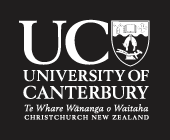Assoc Prof M Staiger
Applications accepted all year round
Competition Funded PhD Project (European/UK Students Only)
About the Project
This PhD project is focussed on developing a detailed understanding of the biocorrosion of bioresorbable metallic implants (BMIs) based on new types of bioresorbable alloys with the appropriate degradation rates for use in orthopaedic implants. We are looking for a highly motivated and enthusiastic PhD student who has a strong interest in the materials science and engineering of biomaterials. A strong interest in the interrelationships between metal alloy processing and properties, and materials characterisation is required. The successful candidate will join a multidisciplinary team that is investigating novel metal alloys and advanced porous implant design for orthopaedic bone-interfacing implants in various orthopaedic applications.
Background & Rationale:
Recent studies carried out by our group (and others) have shown that there is huge potential for the development of an entirely new family of orthopaedic metallic biomaterials based on BMIs. These novel biomaterials are both weight-bearing and resorbable by the body, removing the need for follow up surgery to remove the implant.
An important facet of this field that requires new research is to develop a clear understanding of the important factors that control the biocorrosion of BMIs in vivo (e.g. magnesium alloy implants in animals and humans). This is presently poorly understood but is critical to developing new BMIs with appropriate biocorrosion rates that match bone remodelling. Greater fundamental knowledge is required in this area before BMIs will find their way into orthopaedic applications.
Our group has already shown potential for a new type of biocell that mimics the in vivo environment by comparing both in vitro and in vivo data. We now want to extend this work to more advanced methods that study the interaction of human serum constituents on the biocorrosion mechanisms of these alloys. Novel electrochemical methods and advanced protein characterisation will a part of this approach. The details of the interrelationship between the underlying metal properties (chemical composition, microstructure) and its interaction with human serum is the objective.
This work will be conducted within the Department of Mechanical Engineering in co-operation with Department of Materials Engineering, Monash University (Australia) and Department of Anatomy & Structural Biology, University of Otago (Dunedin). The candidate will have the opportunity to work on the cutting edge of novel orthopaedic biomaterials that will lead to an entirely new generation of orthopaedic implants. Completion of the PhD degree in this project would prepare the candidate for further research work in academia or the biotechnology industry.
Funding Notes
Candidates must hold a 1st class bachelor degree in engineering to be considered. 1st class materials, chemical and mechanical engineers will be considered.
Top candidates will be encouraged to apply for a UC Doctoral Scholarship at:
http://www.canterbury.ac.nz/ScholarshipSearch/ScholarshipDetails.aspx?ScholarshipID=6935.127.
As a guide, a GPA of at least 7-8 is required to have a chance in obtaining a UC Doctoral Scholarship.
Candidates with a background in biochemistry/electrochemistry and an interest in materials science will also be looked upon favourably (Science students must already hold a 1st class Masters degree).
References
Supervisory team:
Dr. Mark P. Staiger
Materials Engineering Group, Department of Mechanical Engineering, University of Canterbury, Christchurch, New Zealand
Dr. Nick Birbilis
Department of Materials Engineering, Monash University, Melbourne, Australia
Dr. George Dias
Department of Anatomy & Structural Biology, University of Otago, Dunedin
Living & Studying in New Zealand: University of Canterbury is the premier University of New Zealand for engineering studies (www.canterbury.ac.nz/theuni). With a population of over 300,000 people, Christchurch is the largest city in the South Island, located on the east coast. The city is close to both the mountains and the sea, offering a huge range of recreational options. Christchurch is the most affordable major New Zealand city to live in. Christchurch is within easy reach of the great outdoors for climbing, hiking, mountain biking, skiing, sailing, surfing and much more – the ultimate place to live and study.

 Continue with Facebook
Continue with Facebook

